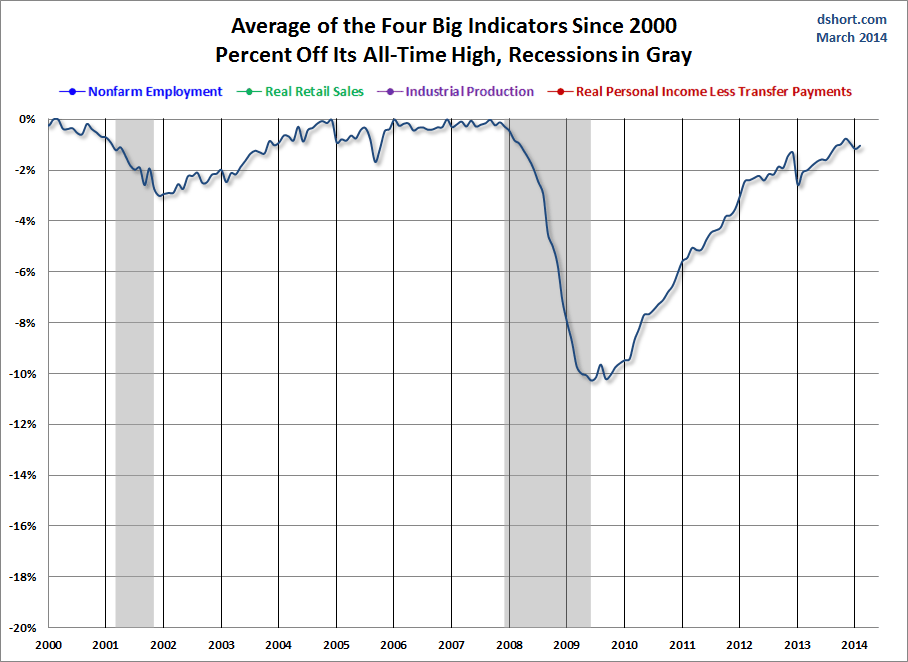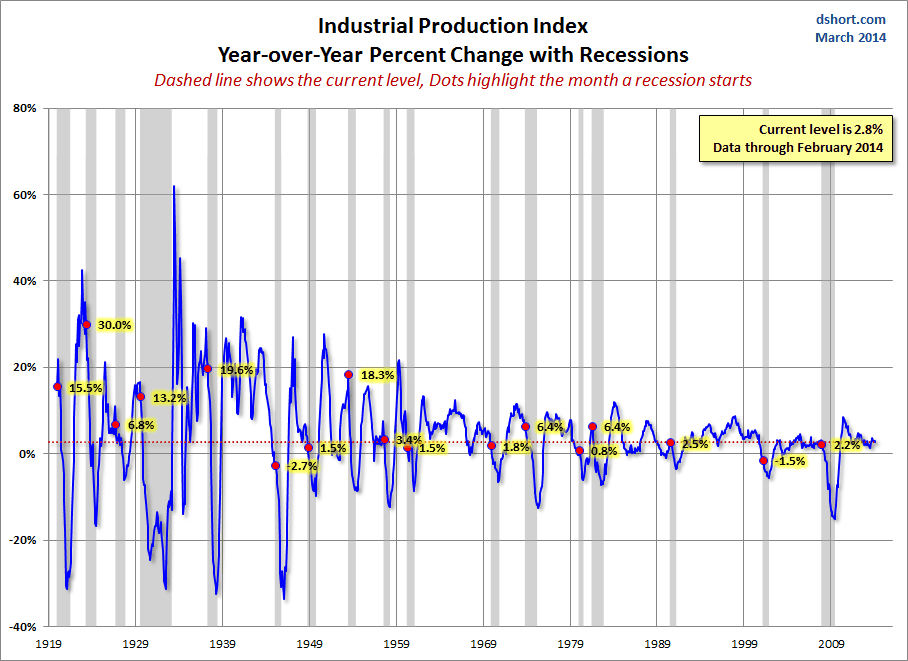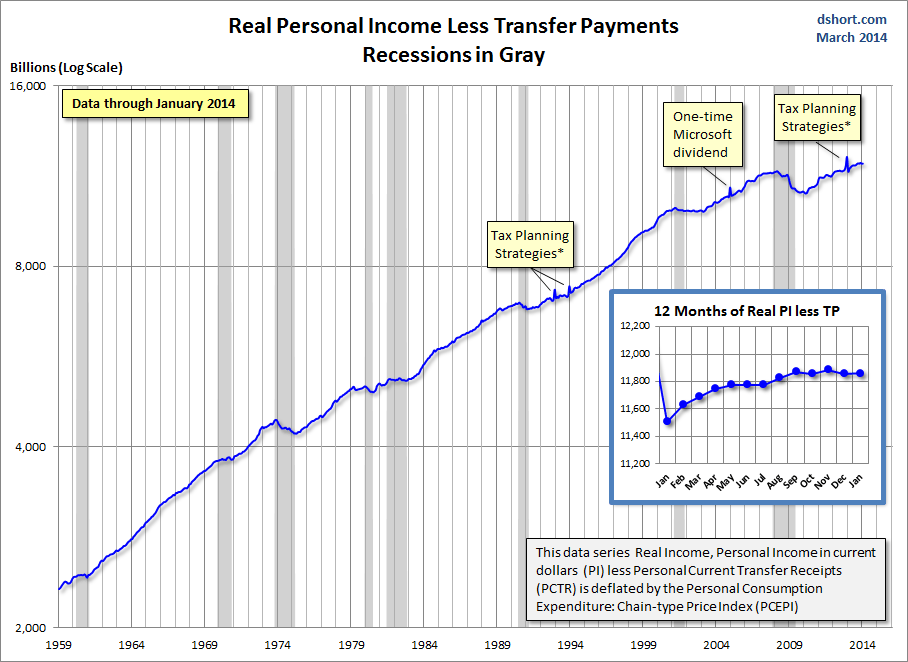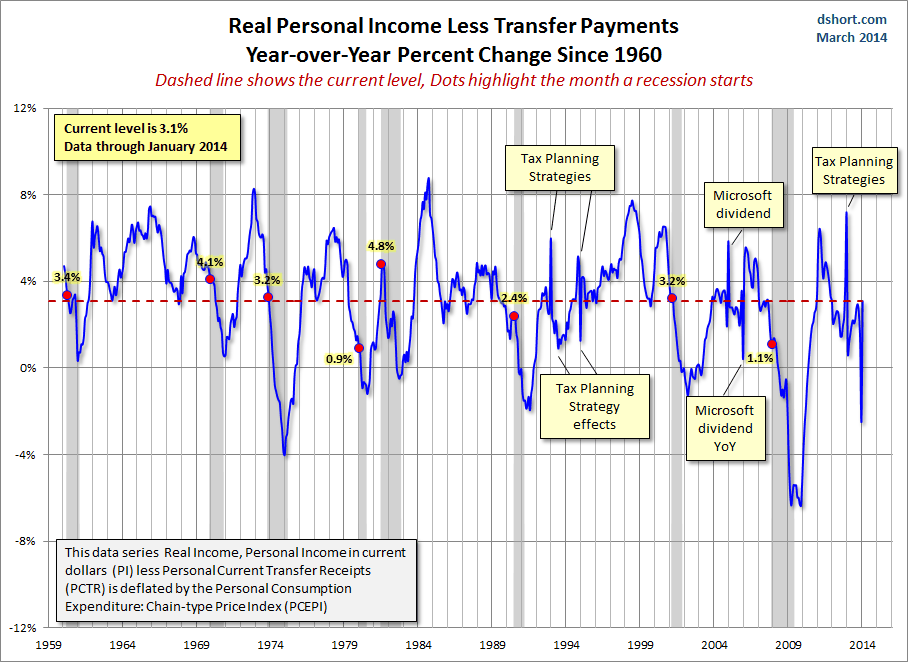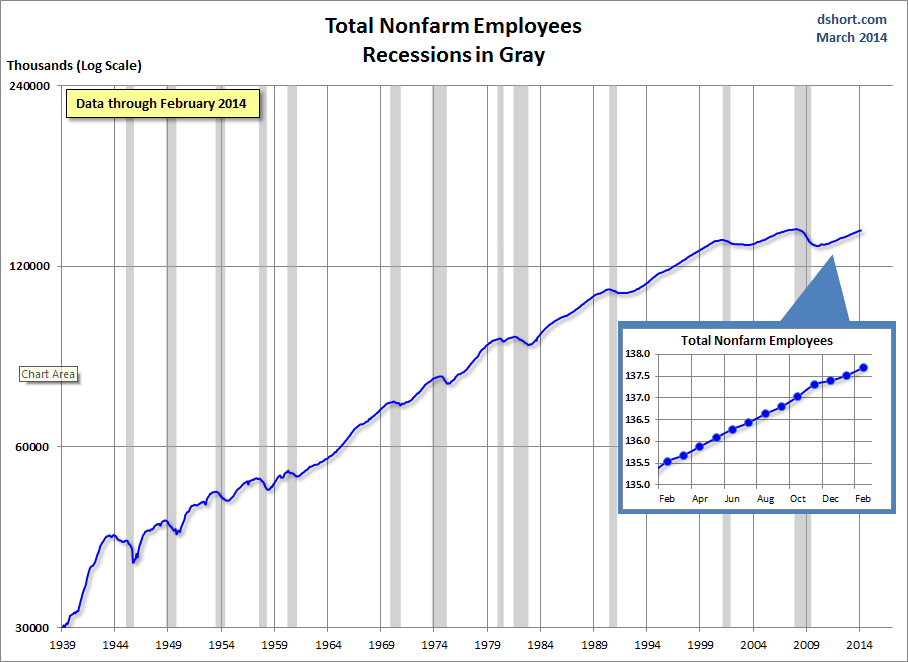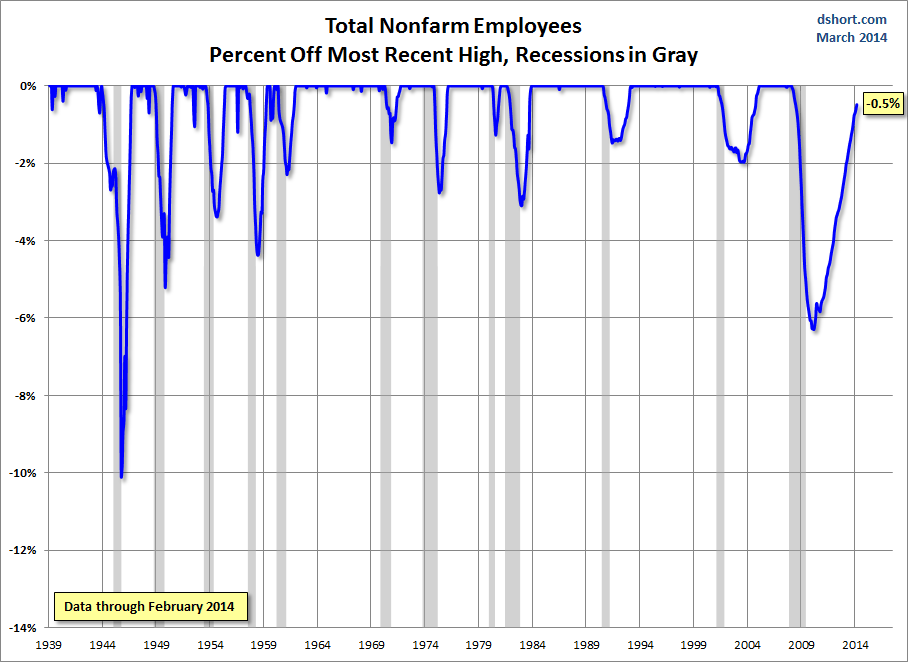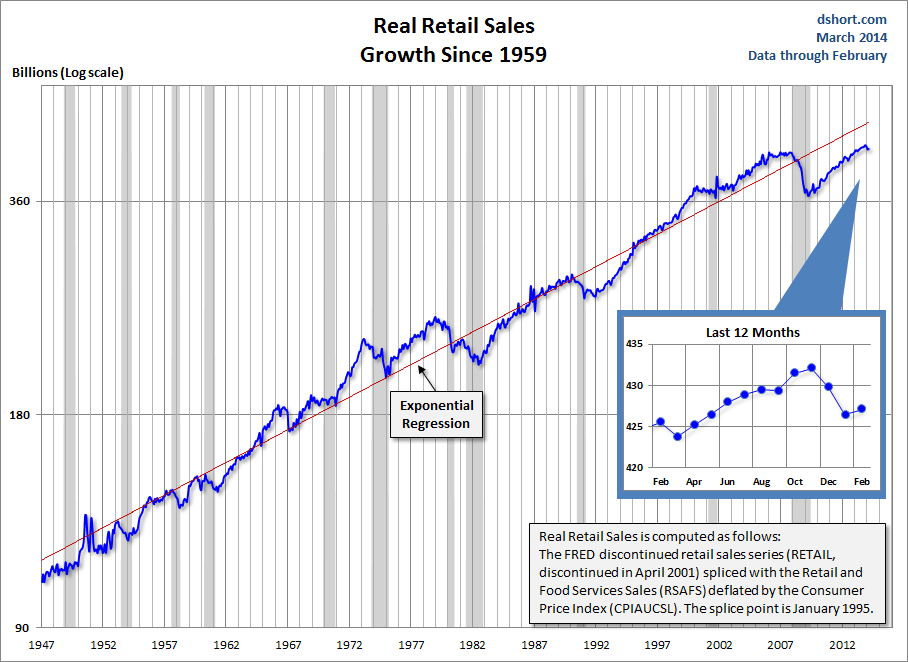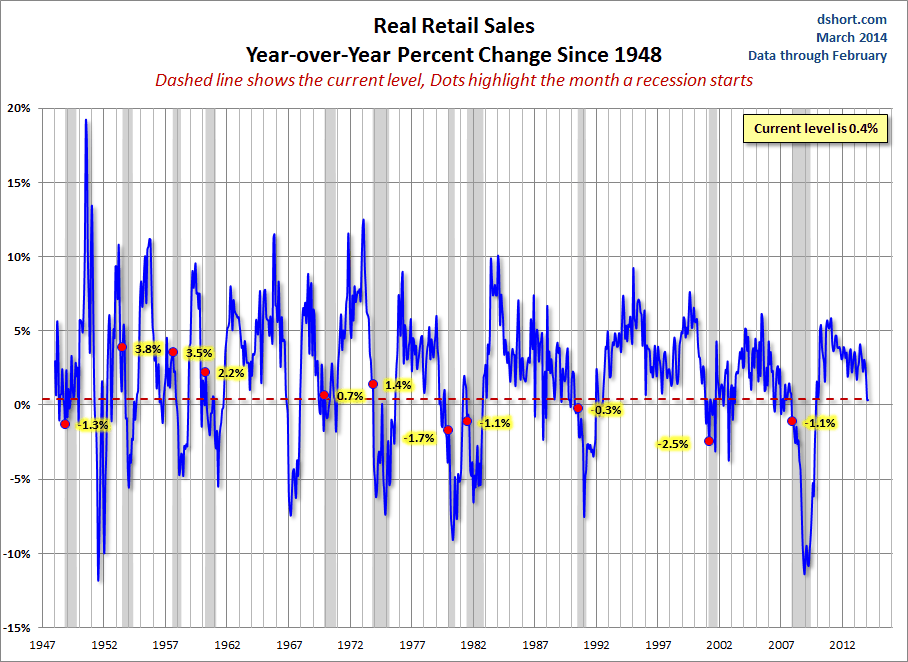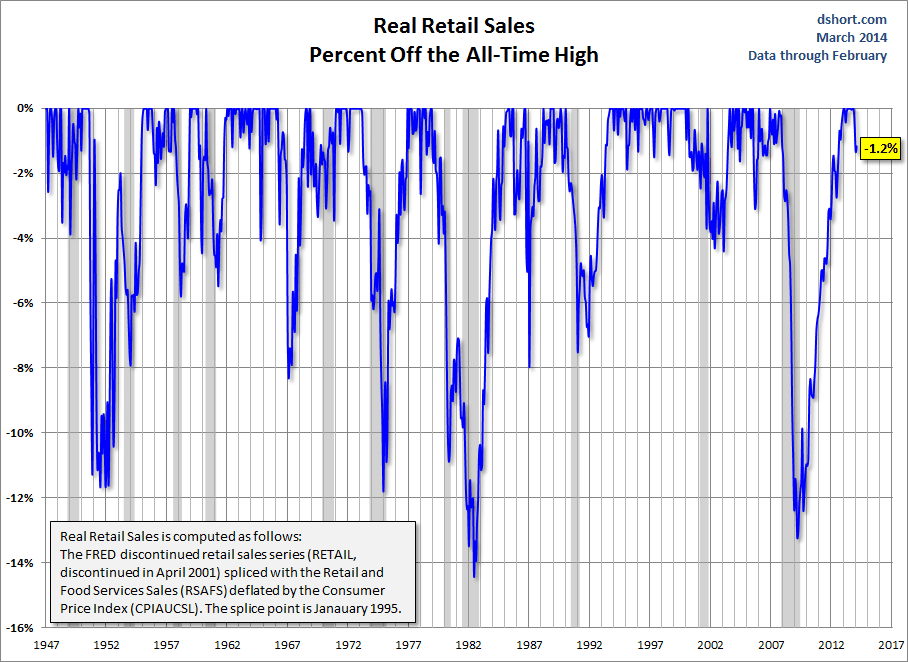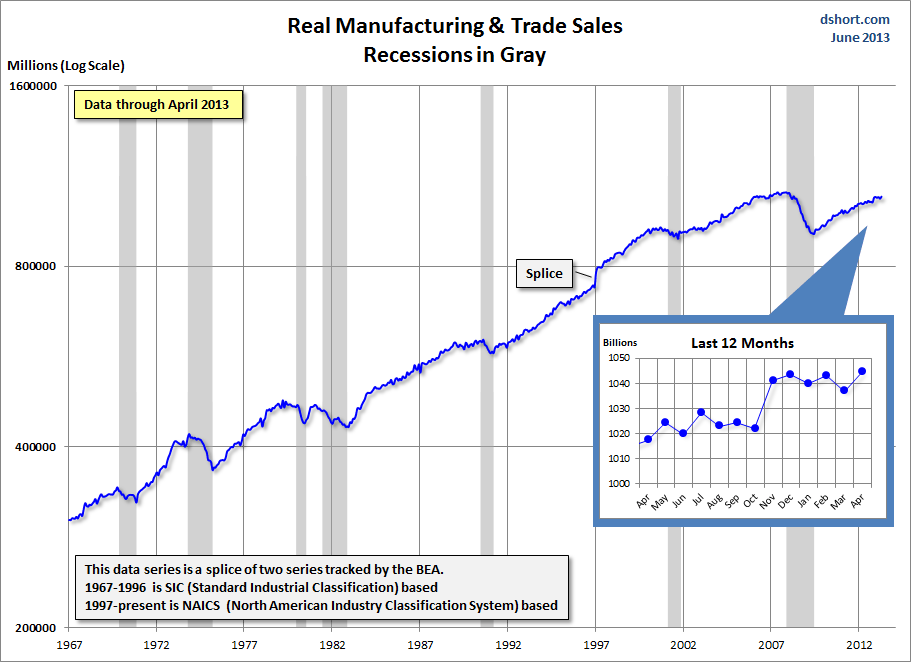Note from dshort: This commentary has been revised to include Real Retail Sales for February, now that we have the February CPI data.
Official recession calls are the responsibility of the NBER Business Cycle Dating Committee, which is understandably vague about the specific indicators on which they base their decisions. This committee statement is about as close as they get to identifying their method.
There is, however, a general belief that there are four big indicators that the committee weighs heavily in their cycle identification process. They are:
- Industrial Production
- Real Personal Income (excluding transfer payments)
- Nonfarm Employment
- Real Retail Sales (a timelier substitute for Real Manufacturing and Trade Sales)
The Latest Indicator Data

Yesterday's release of the February Consumer Price Index enables us to calculate Real Retail Sales. The latest month-over-month data point, up 0.17% (rounded to 0.2% in the table below), is a small improvement over the sharp two-month decline in December and January. The general opinion is that extreme weather has been largely responsible for several weak economic indicators, retail sales among them. Further illustrating the weakness in Real Retail Sales is the microscopic 0.37% year-over-year February increase.
On a personal note, I'm typing this from our daughter's home in Hillsborough, NC, where we've been puppy sitting for the few two days while she's travelling. My wife and I had planned to visit the local restaurants for our evening meals. But a mixture of rain and freezing rain put definite damper on those intentions. At this point, our household March retail sales are definitely in a weather-related seasonal slump.
For another perspective on sales, see my monthly update on Real Retail Sales per Capita.
The chart and table below illustrate the performance of the Big Four and a simple average of the four since the end of the Great Recession. The data points show the cumulative percent change from a zero starting point for June 2009. The latest data point is the first for the 56th month.
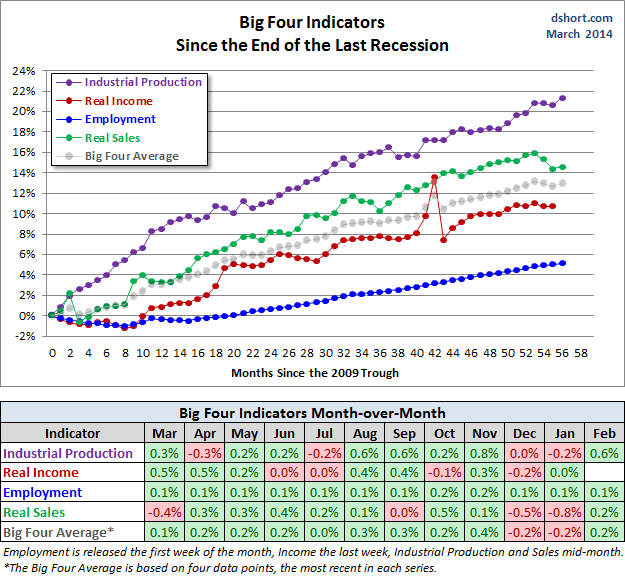
Current Assessment and Outlook
The overall picture of the US economy had been one of a ploddingly slow recovery from the Great Recession, and the data for December and January months have shown contraction. The general explanation in the popular economic press is that severe winter weather has been responsible for the bad data, and that we shouldn't read the slippage as the beginnings of a business cycle decline. With three of the four indicators now in hand for February, the two-month decline, a phenomenon rarely seen outside proximity to a recession, appears to have been reversed. Assuming unusually severe weather has been the dominant factor in the two-month contraction, we should see a rebound with the coming of Spring. Indeed, Punxsutawney Phil's 2014 forecast of six more weeks of winter weather expired three days ago.
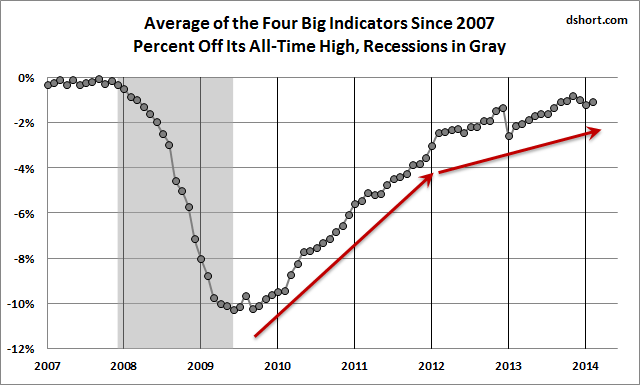
The next upate of the Big Four will be on Friday, March 28th with the release of the February Personal Income and Outlays for February.
Background Analysis: The Big Four Indicators and Recessions
The charts above don't show us the individual behavior of the Big Four leading up to the 2007 recession. To achieve that goal, I've plotted the same data using a "percent off high" technique. In other words, I show successive new highs as zero and the cumulative percent declines of months that aren't new highs. The advantage of this approach is that it helps us visualize declines more clearly and to compare the depth of declines for each indicator and across time (e.g., the short 2001 recession versus the Great Recession). Here is my own four-pack showing the indicators with this technique.
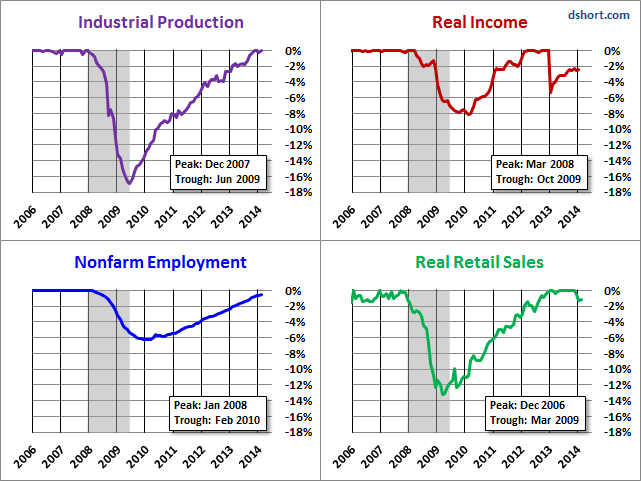
Now let's examine the behavior of these indicators across time. The first chart below graphs the period from 2000 to the present, thereby showing us the behavior of the four indicators before and after the two most recent recessions. Rather than having four separate charts, I've created an overlay to help us evaluate the relative behavior of the indicators at the cycle peaks and troughs. (See my note below on recession boundaries).
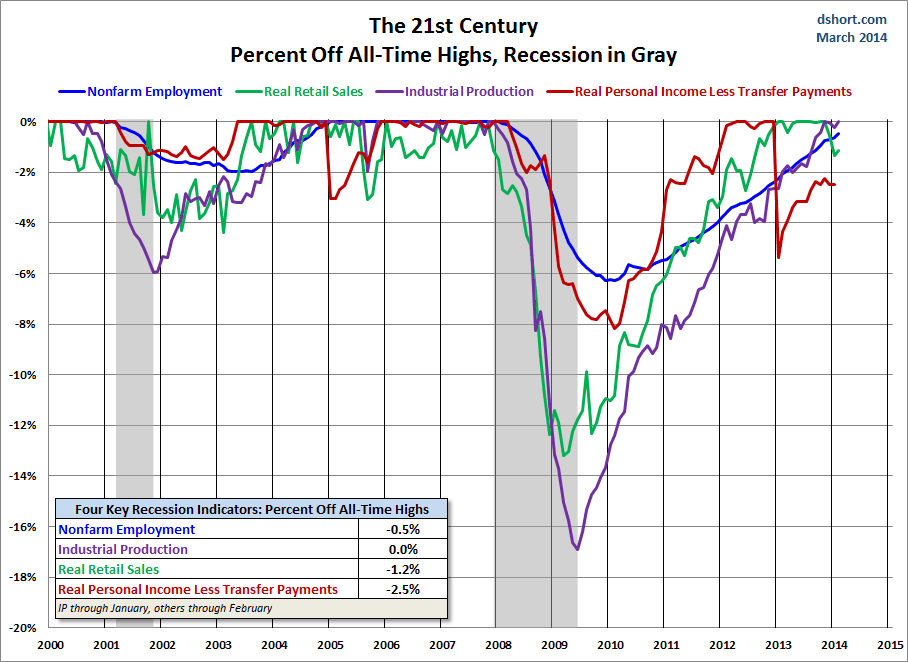
The chart above is an excellent starting point for evaluating the relevance of the four indicators in the context of two very different recessions. In both cases, the bounce in Industrial Production matches the NBER trough while Employment and Personal Incomes lagged in their respective reversals.
As for the start of these two 21st century recessions, the indicator declines are less uniform in their behavior. We can see, however, that Employment and Personal Income were laggards in the declines.
Now let's look at the 1972-1985 period, which included three recessions -- the savage 16-month Oil Embargo recession of 1973-1975 and the double dip of 1980 and 1981-1982 (6-months and 16-months, respectively).
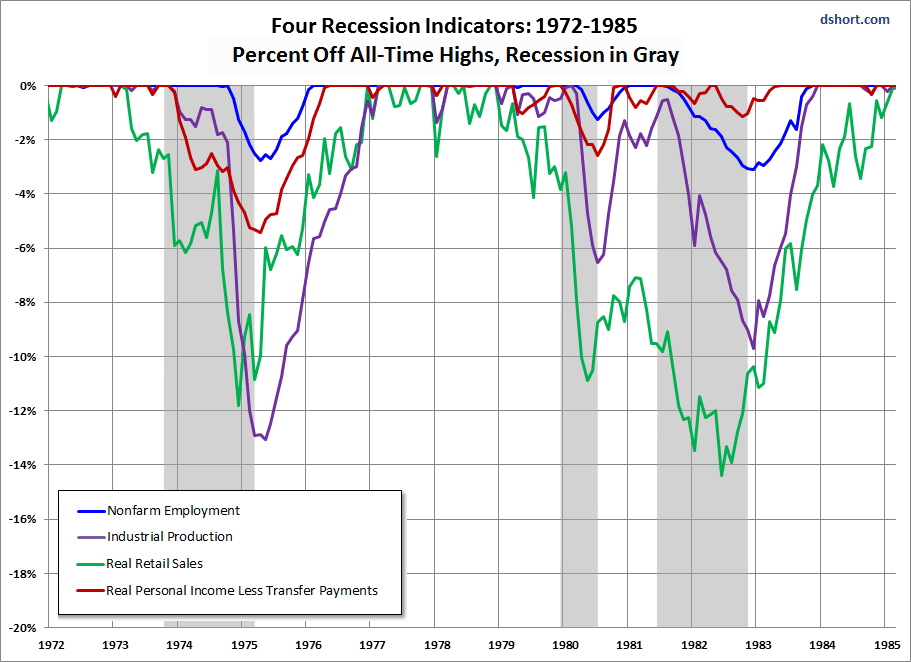
And finally, for sharp-eyed readers who can don't mind squinting at a lot of data, here's a cluttered chart from 1959 to the present. That is the earliest date for which all four indicators are available. The main lesson of this chart is the diverse patterns and volatility across time for these indicators. For example, retail sales and industrial production are far more volatile than employment and income.

History tells us the brief periods of contraction are not uncommon, as we can see in this big picture since 1959, the same chart as the one above, but showing the average of the four rather than the individual indicators.
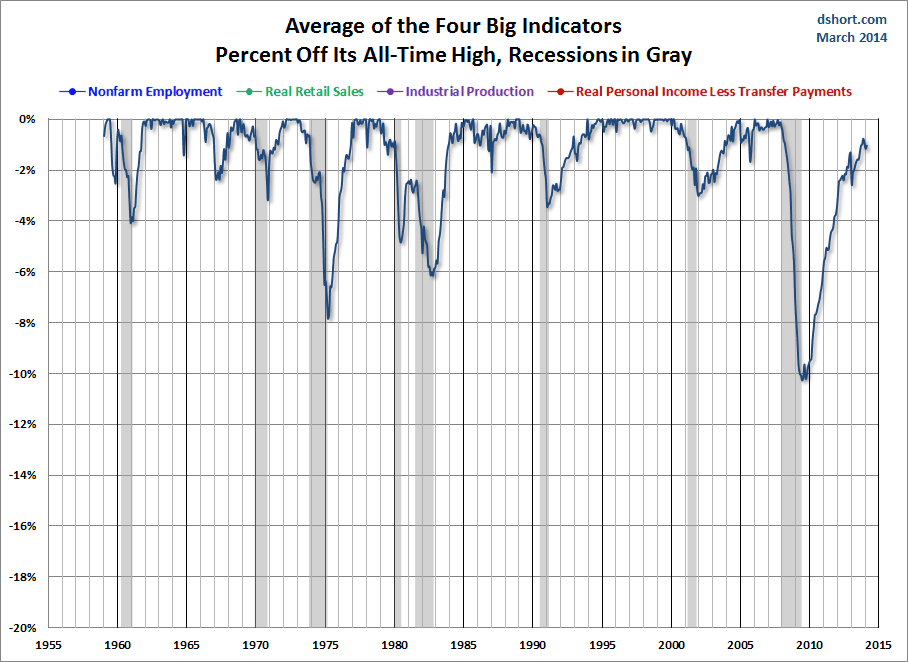
The chart clearly illustrates the savagery of the last recession. It was much deeper than the closest contender in this timeframe, the 1973-1975 Oil Embargo recession. While we've yet to set new highs, the trend has collectively been upward, although we have that strange anomaly caused by the late 2012 tax-planning strategy that impacted the Personal Income.
Here is a close-up of the average since 2000.
Each of the four major indicators discussed in this article are illustrated below in three different data manipulations:
- A log scale plotting of the data series to ensure that distances on the vertical axis reflect true relative growth. This adjustment is particularly important for data series that have changed significantly over time.
- A year-over-year representation to help, among other things, identify broader trends over the years.
- A percent-off-high manipulation, which is particularly useful for identifying trend behavior and secular volatility.
Industrial Production
The US Industrial Production Index (INDPRO) is the oldest of the four indicators, stretching back to 1919. The log scale of the first chart is particularly useful in showing the correlation between this indicator and early 20th century recessions.
This data series is computed as by taking Personal Income (PI) less Personal Current Transfer Receipts (PCTR) and deflated using the Personal Consumption Expenditure Price Index (PCEPI). I've chained the data to the latest price index value.
The "Tax Planning Strategies" annotation refers to shifting income into the current year to avoid a real or expected tax increase.
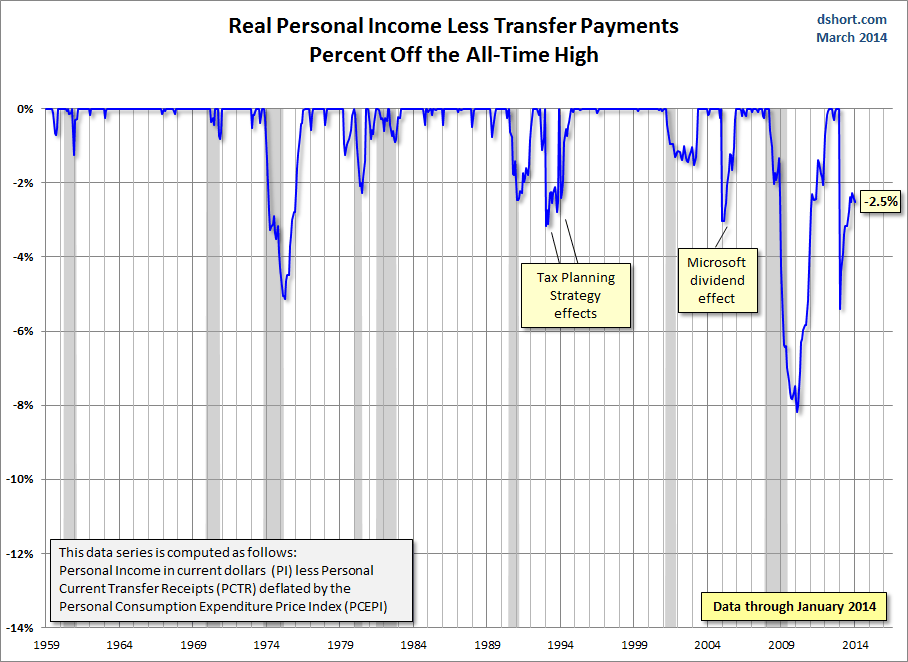
For a visual sense of the relative size of Personal Income and Transfer Receipts (Social Security, etc.), here is stacked area chart of nominal values. Many people assume that Transfer Receipts (Payments) are a larger source of income than they really are.
Total Nonfarm Employees
There are many ways to plot employment. The one referenced by the Federal Reserve researchers as one of the NBER indicators is Total Nonfarm Employees (PAYEMS).

This indicator is a splicing of the discontinued retail sales series (RETAIL, discontinued in April 2001) with the Retail and Food Services Sales (RSAFS) and deflated by the seasonally adjusted Consumer Price Index (CPIAUCSL). I used a splice point of January 1995 because that date was mentioned in the FRED notes. My experiments with other splice techniques (e.g., 1992, 2001 or using an average of the overlapping years) didn't make a meaningful difference in the behavior of the indicator in proximity to recessions. I've chained the data to the latest CPI value.
This indicator is a splice of two seasonally adjusted series tracked by the BEA. The 1967-1996 component is SIC (Standard Industrial Classification) based and the 1997-present is NAICS (North American Industry Classification System) based. The data are available from the BEA website. See Section 0 - Real Inventories and Sales and look for Tables 2AU and 2BU. The FRED economists use the Real Retail Sales above for their four-pack. However, ECRI appears to use this series as their key indicator for sales. Note that the Manufacturing and Trade Sales data is updated monthly with the BEA's Personal Consumption and Expenditures release, but the numbers lag by one month from the other PCE data.
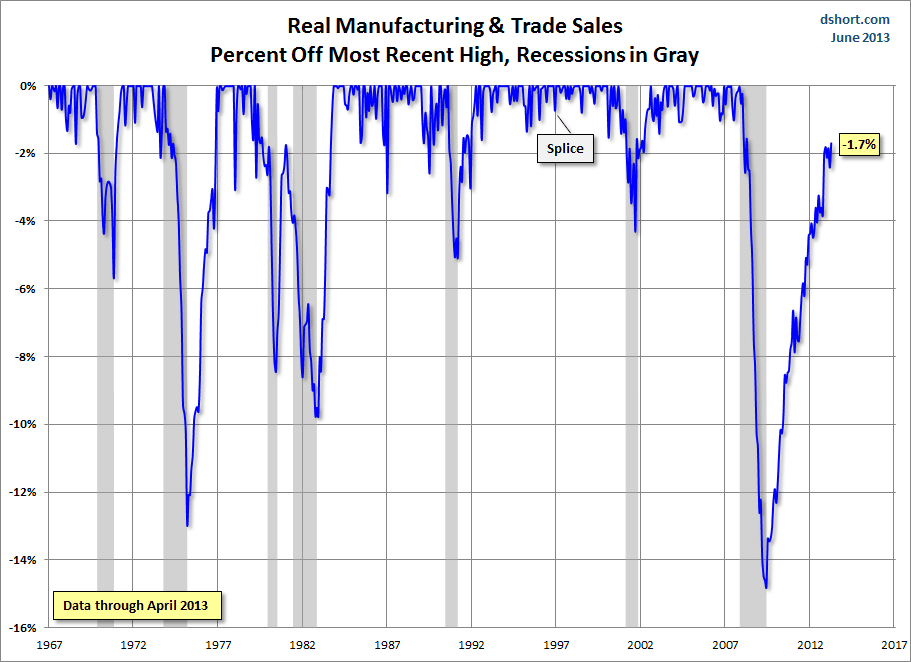
Note: I represent recessions as the peak month through the month preceding the trough to highlight the recessions in the charts above. For example, the NBER dates the last cycle peak as December 2007, the trough as June 2009 and the duration as 18 months. The "Peak through the Period preceding the Trough" series is the one FRED uses in its monthly charts, as explained in the FRED FAQs illustrated in this Industrial Production chart.

